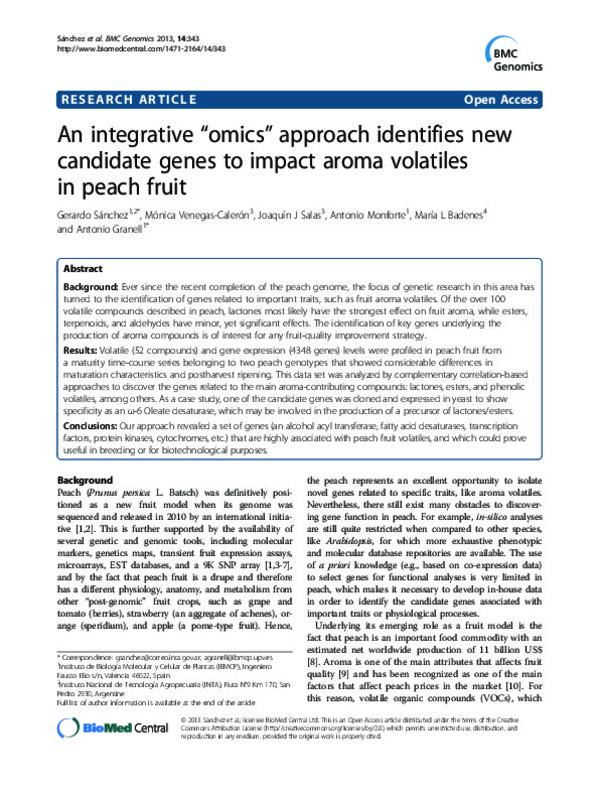JavaScript is disabled for your browser. Some features of this site may not work without it.
Buscar en RiuNet
Listar
Mi cuenta
Estadísticas
Ayuda RiuNet
Admin. UPV
An integrative "omics" apprach identifies new candidate genes to impact aroma volatiles in peach fruit
Mostrar el registro completo del ítem
Sánchez, G.; Venegas Calerón, M.; Salas, J.; Monforte Gilabert, AJ.; Badenes, M.; Granell Richart, A. (2013). An integrative "omics" apprach identifies new candidate genes to impact aroma volatiles in peach fruit. BMC Genomics. 14(343):1-23. https://doi.org/10.1186/1471-2164-14-343
Por favor, use este identificador para citar o enlazar este ítem: http://hdl.handle.net/10251/63968
Ficheros en el ítem
Metadatos del ítem
| Título: | An integrative "omics" apprach identifies new candidate genes to impact aroma volatiles in peach fruit | |
| Autor: | Sánchez, Gerardo Venegas Calerón, Monica Salas, J Badenes, M.L. | |
| Entidad UPV: |
|
|
| Fecha difusión: |
|
|
| Resumen: |
[EN] Background: Ever since the recent completion of the peach genome, the focus of genetic research in this area has turned to the identification of genes related to important traits, such as fruit aroma volatiles. Of the ...[+]
|
|
| Derechos de uso: | Reconocimiento (by) | |
| Fuente: |
|
|
| DOI: |
|
|
| Editorial: |
|
|
| Versión del editor: | http://dx.doi.org/10.1186/1471-2164-14-343 | |
| Código del Proyecto: |
|
|
| Agradecimientos: |
We are grateful to Cristina Besada, PhD (Instituto Valenciano de Investigaciones Agrarias, IVIA, Spain) for her help with the fruit quality parameter analyses. We are also thankful to Cristina Marti and Clara Pons (Instituto ...[+]
|
|
| Tipo: |
|









